Abstract
- Purpose: The purpose of the research is to evaluate critical success factors of Jumeirah beach, Dubai. In addition, the study will report demographics of tourists who visit Jumeirah beach in Dubai.
- Design methodology: The study will use a random sampling to collect information related to critical success factors of Jumairah beach. Questionnaires will be given to randomly selected participants whose responses will be used in analysis. The questionnaires answered consist of 33 valid responses.
- Findings: The research reveals that all variables identified including attractiveness, prices, quality of service, availability of room categories, safety and security are critical to success of the beach.
- Research limitations/implications: The research was limited to tourists who were at the beach at the time and hence their responses were more likely to be guided by their experiences.
Introduction
The study aims to assess Critical Success Factors (CSFs) of Jumairah beach tourism. The research randomly studied various people visiting Jumairah beach to establish the critical factors that contribute to its success. Tourism systems are made of sophisticated service systems with multiple interrelations to economic, social and environmental factors. Sustainable promotion of tourism to any destination pre-supposes an in-depth understanding of sophistication/traits of tourism system. This is illustrated below,
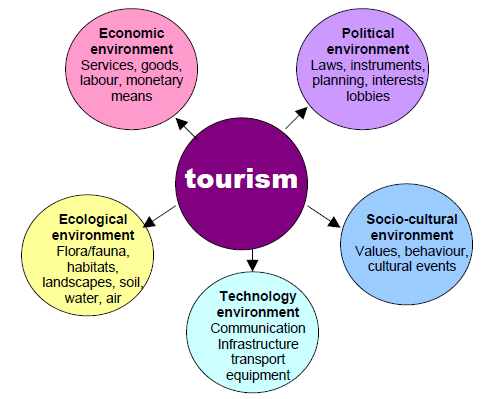
In order to succinctly understand dynamics around tourist destinations and hence identify critical factors, Baloglu (2007) produced what he referred to as a tourism chain useful in decision making. This is illustrated below,
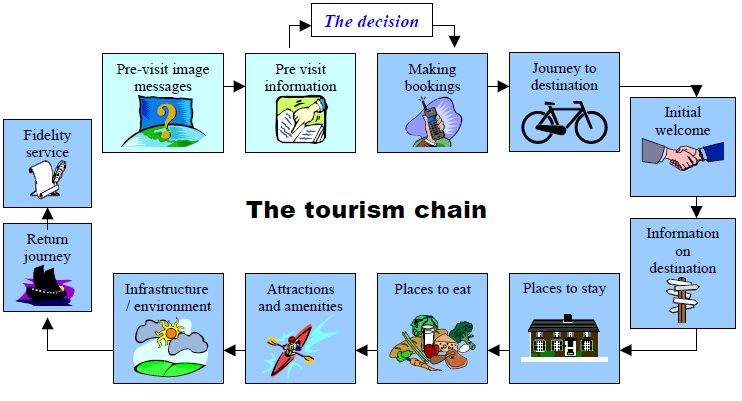
In modern dynamic world, understanding critical factors that contribute to success of an entity is important. Consequently, organization’s managers invest heavily in understanding such factors. More often than not, it is not just infrastructure or service delivery that shapes business success; there are other factors such as market demographics critical to development of appropriate strategies that ensure optimal success of the entity/business (Ahmed, 1991).
Literature review
Mark (2012) emphasizes that in many industries, success is determined by three to six factors. He stressed the importance of paying special attention to the critical factors if success is to be attained. The factors are defined as the industry’s critical success factors (CSFs). For business to flourish, the few areas must be given special considerations. The factors should be at the forefront of management tasks.
In another research, Geller (2010) notes that in services sector, CSFs dictate competitive advantage. In his study Geller (2010) studied the effect of CSFs in the tour market due to its market dynamism and reported that in deed there were some unique and critical factors for its success. The same was replicated by Mark (2012) who emphasized the importance of success factors in tourism planning. Further, Baker & Cameron (2008) conducted an evaluation of CSFs linked to market research as well as design of strategies that promote tourist destinations. Multiple researchers have been done with respect to geographically-delimited locations where visitors are tentatively attracted.
The researchers point out the importance attributed to various items which contribute to tourists’ preferences, attractions as well as competitiveness. Amongst the attributes, most researchers make emphasis on cultural events promotion, knowledge of agents/tour operators, leisure quality, receptivity, history richness, political stability, communication, and security.
Another research of Baloglu (2007) represents a list of factors that positively or negatively affect tourism success. According to this research, the factors include prior knowledge of agents/tour operators, receptivity of residents, air travel costs, as well as leisure and recreational facilities.
On the other hand, Mark (2012) provides an in-depth discussion of success factors to a large range of practical tourist destinations. Significance, ranked the first, highlights the importance of heritage as the major decision factor. The second place goes to distinction which the authors describe as the element that makes an area unique as compared to others. Clustering was also identified as an important element of tourist destination successes. Others include brand and networking accessibility, security, seasonality, partnerships, and planning, among others.
Additionally, the study reveals that it is important to understand visitor’s economic profile in order to create the socio-economic profile of people who visit the beach (Mark, 2012). In the study, the author generated the following table as the income demographics for persons visiting beaches.
The results provide a pointer to the fact that middle income earners are the leading visitors to beaches across the globe. Additionally, the study revealed that most of the tourists originate from urban areas and are more empowered and as such are keen on information relating to beaches prior to making visits. As a matter of fact, the study revealed that the visitors are increasingly concerned about pricing, security, and attractions in their decisions on which beaches to visit. Additionally, the research demonstrated that most of the visitors, prior to visiting a beach would have checked online for information about the beach, with the top searched information being: attractions, price of products, security and means of transportation.
In another research, Brotherton & Shaw (2006) noted that beach with multiple facilities such as Holiday Resorts, top restaurants, entertainment spots, and interesting cultures attract a large pool of visitors as compared to plane beaches. In another research Mark (2012) reported that the attitude of the surrounding community towards beach visitors is also a major determinant of how successful the beach can be. However, the author points out that the most affected in terms of neighbourhood attitude are people who have previously visited the beaches. As expected, in beaches where tourists have bad experiences with the neighbouring community, success is almost inevitable.
In determining demand for beaches, another research reported that existing facilities dictated the number and demographics of people visiting beaches. The research further noted that other than facilities, security both in and out of the facilities is of extreme importance to the people who visit the beaches (Brotherton & Shaw, 2006). As a matter of fact, the research reported that tourists were more willing to spend additional time on the beach’s facilities which were both hygienic and affordable. Many visitors would, however, cut short their stay if the beach was unhygienic and/or the costs were high.
On the other hand, another research reported that the level of assistance that the neighbouring community is willing to offer to the tourists also dictates their willingness to return to the beach or even their willingness to spend additional time. As a matter of fact, the research reported that in instances where the neighbouring community is more supportive, there is a high likelihood that the tourists will be willing to spend more time. A household survey of willingness reported that despite prior plans on the duration to spend on holiday, the attitude of the neighbouring community dictated whether or not they chose to shorten or lengthen there stay. It is important to point out that such occurrences contribute to the success or failures of the beach.
Research methodology
Data collection
The research data was obtained using questionnaires through a range of demographics factors. The descriptive statistics table provided depicts the five demographic aspects constituting the research. A total of 33 responses were received, each of which describes its demographics. These include age, gender, status, employment and nationality. A questionnaire with a series of questions was delivered amongst the targeted population whereby the respondents were expected to respond to each of the questions as guided. Random sampling was used in the study. Apart from the demographic variables, the study looked into five variables identified as possibly important in success of the beach. The variables included attractiveness, prices, quality of service, availability of room categories, safety and security. A question was included for each of the variables. The questions were as follows:
- Q1C – Overall, how do you rate the attractiveness of the destination in determining your chosen travel destination?
- Q2C – Overall, how do you rate the importance of the prices of the product and services in determining your travel destination?
- Q3C – Overall, how do you rate the importance of quality of product and services in determining your chosen travel destination?
- Q4C – Overall, how do you rate the availability of the room categories you requested and availability for other facilities you requested in determining your chosen destination?
- Q5C – Overall, how do you rate the importance of safety and security of the destination you wish to travel?
A 4-point Likert scale ranging from not important to very important.
Sampling
The study adopted random sampling whereby subjects were randomly selected amongst tourists visiting Jumeirah beach in Dubai. The selected respondents were given explanations as to the significance of the study, provided with questionnaires and requested to fill them and them over to the research assistants. Random sampling was adopted to limit the possibility of biased a biased sample. Previous researches have suggested random sampling as the best way to avoid biased results and recommended its use whenever possible.
Respondents’ profile
The respondents of the study were drawn from diverse background. As a matter of fact, anyone touring the beaches was considered an appropriate respond to the study. Consequently, there were no specific background characteristics expected to define the studied and further, in collecting the data, no special attention was paid to the same.
Data analysis
The data was fed in SPSS analysis for further evaluation. Corresponding histograms for each of the case is drawn in order to establish their importance in the beach’s success. The results are presented below:
Descriptive statistics
The Mean, Median, Mode m SD and Variance the Responders.
All the variables show a normal distribution. In all cases, The SD is around 1 which is good.
Frequencies Tables.
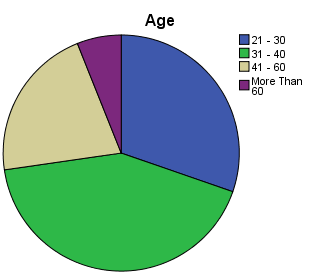
From the table and pie chart, it is evident that age plays an important role in determining the visitors of the beach. The sample shows that the majority of them are aged between 31 and 40 years, followed by the age group between 21 and 30 years which means that a majority of the visitors are in younger age categories. As a matter of fact, most of the visitors to the beach are aged 40 years and below.

In terms of gender, the random sampling has revealed that males are slightly more likely to visit the beach than females.
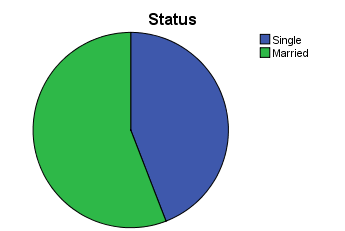
Marital status was also considered in analysis. The sample shows that married couples are more likely to visit the beach than single people, implying that the beach is ideal for families. However, the gap is no so big between single people and families indicating the beach is also a good destination for the former.

Employment status is also identified to play an important role in determining the people who visit the beach. Visitors on managerial and executive level are the majority. The fact that they can afford to travel to any other destination, but choose Dubai and Jumeirah area, in particular, means that it is really attractive destination. At the same time, manual and skilled labours also have interest in the destination, which means that Dubai is the destination for all levels of employees and all types of budgets.

Because of the beach and the warm weather of Dubai and Jumeirah area in particular we can see that the majority of visitors are Europeans, followed by GCC because geographic location it could consider as the most attractive area in the region.
Response to questions
- Q1C – Overall, how do you rate the attractiveness of the destination in determining your chosen travel destination?

The results clearly show that attractiveness of the beach is very important to the visitors to make them chose this destination instead of many other destinations around the world. This implies that Dubai can compete with many other destinations around the world because of the big varieties of amenities.
- Q2C – Overall, how do you rate the importance of the prices of the product and services in determining your travel destination?
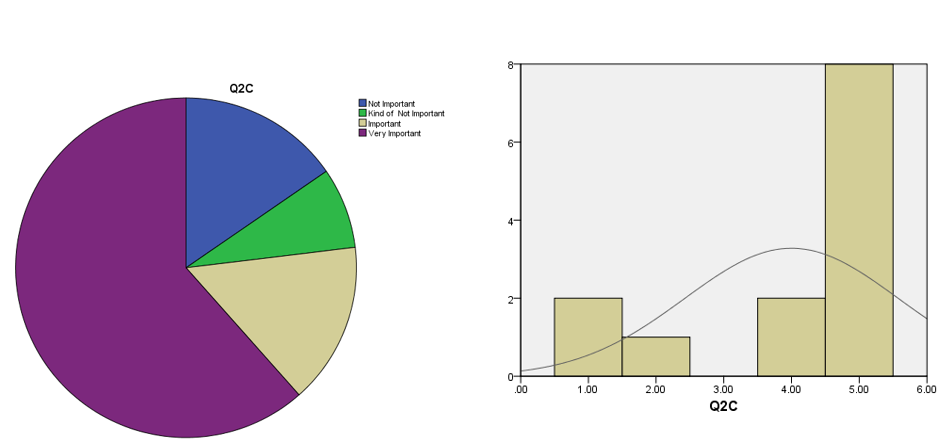
The prices of the product and services visitors expected in a destination can play important role to make the choice to visit. However, many times the higher prices can mean more value which can be decided by the visitors.
- Q3C – Overall, how you rate the importance of quality of product and services in determining your chosen travel destination?
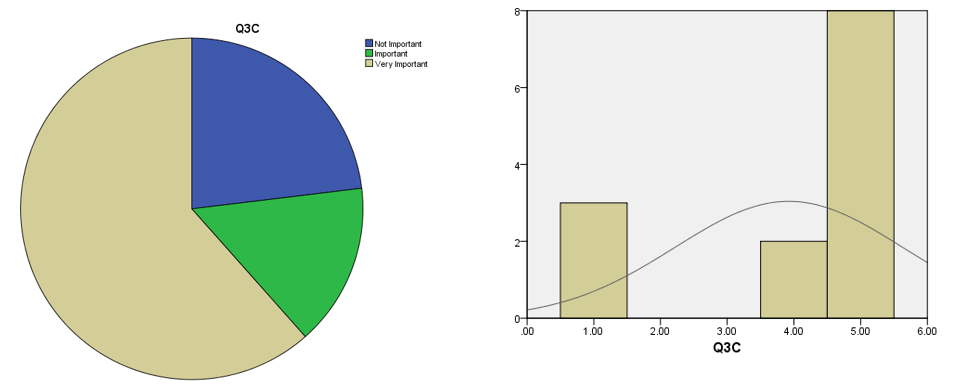
Travellers nowadays choose the destination where they can expect high quality of product and services, so quality is a very important element in choosing the destination.
- Q4C – Overall, how do you rate the availability of the room categories you requested and availability for other facilities you requested in determining your chosen destination?
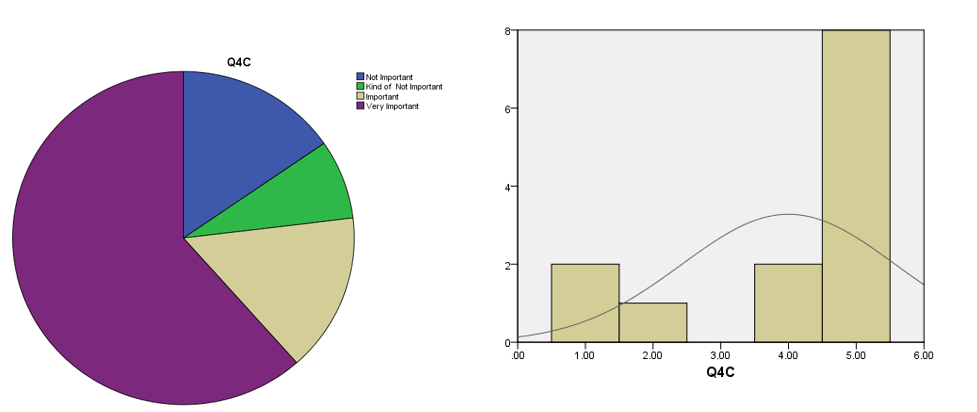
If the destination is attractive, has reasonable prices and high quality but has no available type of rooms which visitors looking for, then they will not be their first choice. That is why availability of the rooms is considered as one of the elements of influence on visitors’ decision in choosing the destination they wish to travel for leisure.
- Q5C – Overall, how do you rate the importance of safety and security of the destination you wish to travel?
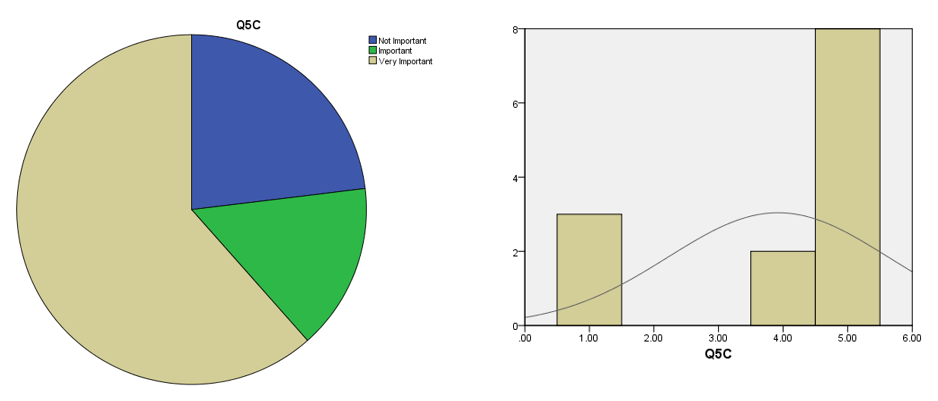
Safety and security play the most important role in visitor’s choice of the destination. The results have suggested that even if a particular destination has the best features in the world, but is not safe and secure, hardly anyone will chose to visit it. Therefore, safety and security are always taken into account. The fact that the beaches of Dubai and UAE in general are secure is one of their most attractive features.
Implications and conclusion
The findings of this study not only confirm the findings of previous researche on the importance of critical factors in ensuring beach success. Conventionally, success is determined by the number of people who visit the beach. Consequently, the factors tourists consider as essential in their decision to visit the beach are of great importance. The results indicate that all the factors proposed as being of critical importance are in deed crucial and as a result are the success factors at Jumeirah beach. Additionally, the study revealed that most people who visit the beaches are aged between 21 and 40 years and although most are couples (families), singe people as well form a large portion of the beaches’ visitors.
It is, therefore, right to conclude that both families and single people love Jumeirah beach; hence, marketing should focus on both. In terms of nationality, Europeans form the largest group of the visitors. Nonetheless, it is evident that the beach attracts tourists from across the globe. In terms of employment, the fact that top level executives form a majority of the tourists visiting the place could be an evidence of the cost issues at the beach.
This is further confirmed by the respondents who do note that price is important in guiding their choice of whether visiting or not Jumeirah beach. Availability of a variety of rooms also emerged as an important factor in determination of success of the beach. Customers are more likely to check online for such availability. Where no rooms are available, it is likely that clients will seek alternative destinations.
References
Ahmed, Z. U. (1991). The influence of the components of a state’s tourist image on product positioning strategy. Tourism Management, 12 (3), 331–340.
Baker, M. J., & Cameron, E. (2008). Critical success factors in destination marketing. Tourism and Hospitality Research, 8 (2), 79-97.
Baloglu, S. (2007). The Relationship between Destination Images and Socio-demographic and Trip Characteristics of International Travellers. Journal of Vacation Marketing, 3 (1), 221–233.
Brotherton, B., & Shaw, J. (1996). Towards an identification and classification of Critical Success Factors in UK Hotels Plc. International Journal of Hospitality Management, 15 (2), 113–135.
Geller, N. (2010). Tracking the critical success factors for hotel companies. Cornell Hotel and Restaurant Administration Quarterly, 25 (2), 76–81.
Mark, J. (2012). Sustainable beach tourism based on natural and cultural heritage. Tourism Journal, 34 (9), 123-129.
